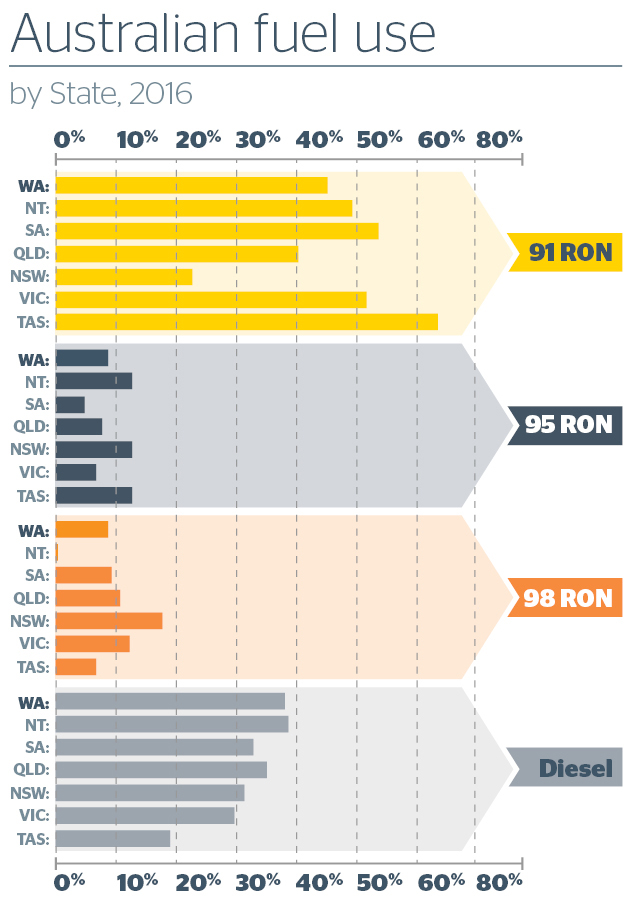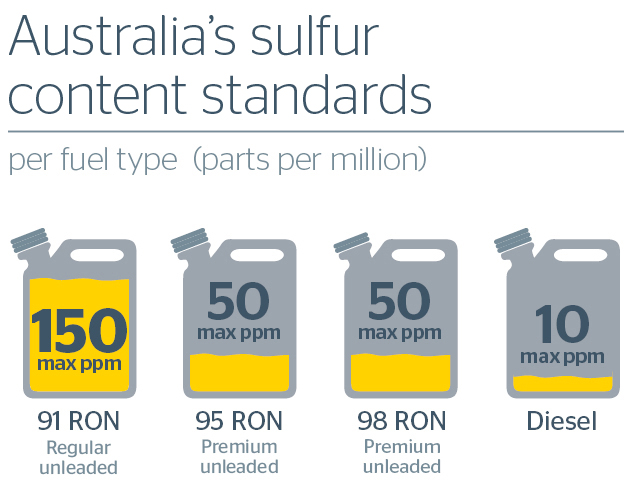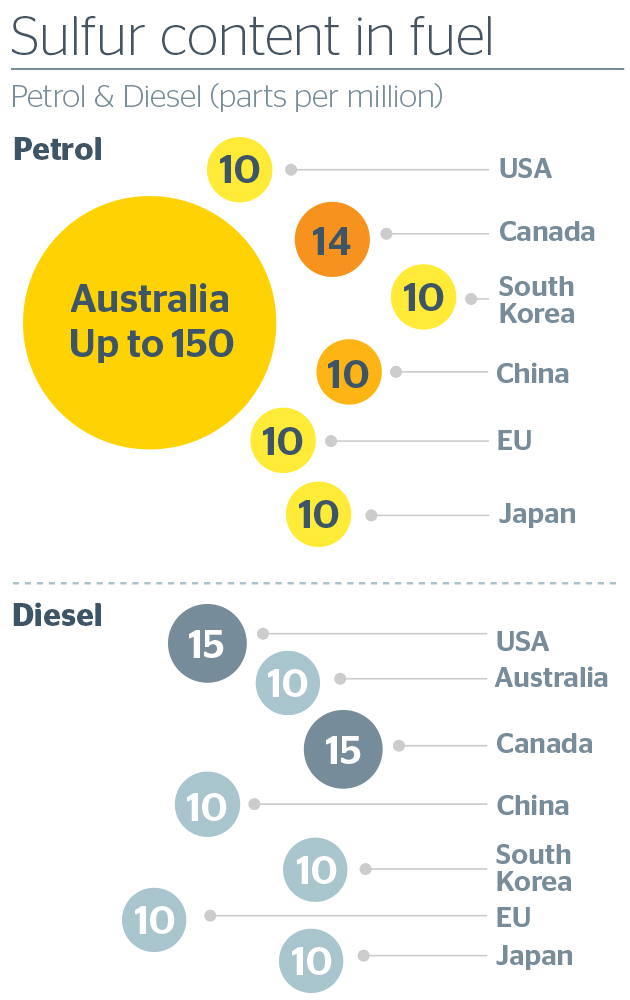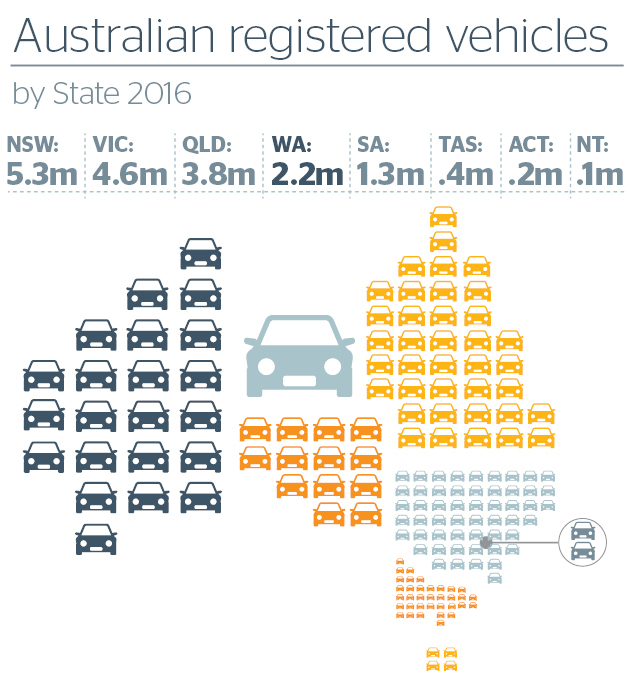Liquid fuels, such as the petrol and diesel we use in cars and trucks, keeps the world turning. But not all fuels are made equal.
And although our petrol and diesel-fuelled passenger cars are becoming more efficient and cleaner, we're not there yet.

Although we think of ourselves as predominantly a petrol-based country (compared to somewhere like Europe where diesel dominates), diesel is actually the second most used fuel type in passenger vehicles across Australia and is the fastest growing fuel type, growing by 1.2 per cent in 2016.
The number of petrol-powered vehicles in Australia (those using 91, 95 and 98RON) dropped by 0.9 per cent in 2016.
However for all states, 91 RON is the most popular type of unleaded fuel, with Tasmania registering the highest proportional use of 91. This is significant because of the high sulfur content allowable in 91 unleaded.

More than 40% of the fuel used in WA is 91 RON, which also has the highest allowable rate of sulfur content, up to 150 ppm.
Sulfur content levels in fuels are a concern as they contribute to noxious vehicle exhaust emissions which can cause human health problems such as reduced lung function, ischemic heart disease, stroke, respiratory illnesses and lung cancer. Currently, passenger vehicles contribute about 17 per cent of all vehicle emissions in Australia. Choosing a low sulfur, higher octane fuel like premium unleaded could help reduce both noxious emissions and CO2 emissions.

Even by international standards, our allowable sulfur content in petrol is one of the highest in the world, higher than countries like China where air quality is a major environmental issue in some cities. Also, vehicle technology can only take us so far given fuels with a high sulfur content can reduce the effectiveness of vehicle emission control technologies built into many modern vehicles.

Sources: Australian Bureau of Statistics, ICCT & DieselNet via TransportPolicy.net, Australian Petroleum Statistics, Office of the Chief Economist, prices as at September quarter 2016.
Drive further for less with discounts on fuel RAC members save 8 cents per litre on any premium 95 or 98 Caltex with Techron® fuel purchase at participating Caltex stations. Limited time offer only, valid from Monday 14th October until Thursday 14th November 2024. *Terms & Conditions apply. See www.rac.com.au/fuel for details.
